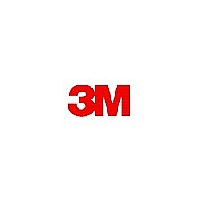RAISLETAPE54 3M, RAISLETAPE54 Datasheet - Page 7

RAISLETAPE54
Manufacturer Part Number
RAISLETAPE54
Description
TAPE ROHS AISLE MARKING 54' ROLL
Manufacturer
3M
Datasheet
1.RAISLETAPE54.pdf
(100 pages)
Specifications of RAISLETAPE54
Tape Type
Marking - Printed "Lead-Free Area"
Backing, Carrier
PVC (Poly Vinyl Chloride)
Thickness
0.0060" (6.0 mils, 0.152mm)
Width
3.00" (76.20mm) 1/4'
Length
54' (16.5m) 18 yds
Color
White, Green Print
Usage
Aisle Marking
Lead Free Status / RoHS Status
Not applicable / Not applicable
Temperature Range
-
Adhesive
-
Thickness - Adhesive
-
Thickness - Backing, Carrier, Liner
-
Other names
51111764688
80000954547
80000954547
Substrates and adhesion – a surface phenomenon, so know surfaces well
Adhesives attach to the surfaces of two substrates, unlike a process
that fuses substrates into a unified whole such as welding metal or
solvent activation of plastics. In selecting a 3M adhesive or tape,
surface condition must be considered: roughness, smoothness, porosity,
coated, uncoated, cleanliness, flexibility, size of the part, and surface
energy of the part.
Adhesive paste, for example, flows readily into a rough surface for
improved effective adhesion. Flexible materials such as paper or thin
gauge metal can be bonded with a thin adhesive transfer tape. Large
rigid parts with smooth clean surfaces can be bonded with a variety
of 3M products ranging from double coated foam tapes to two-part
structural adhesives. Some plastics have plasticizers which migrate to
the surface and degrade the bond over time, so a plasticizer-resistant
adhesive or tape is essential. If the substrate has been powder coat
painted, the coating is the bonding surface rather than the substrate,
and you would want to consider a 3M tape or adhesive developed
specifically for that surface.
Surface energy ranges from high to low. To illustrate the concept of
Note: These values are provided as a guide. Formulation modifications can substantially alter surface energies.
Metal Surfaces
(High Surface Energy)
mJ/m
1103
840
753
526
458
700-1100
250-500
2
Surfaces
Copper
Aluminum
Zinc
Tin
Lead
Stainless Steel
Glass
4
High Surface Energy
Plastics (HSE)
mJ/m
50
47
46
45
43
43
43
42
42
39
38
38
2
Surfaces
Kapton
Phenolic
Nylon
Alkyd Enamel
Polyester
Epoxy Paint
Polyurethane Paint
ABS
Polycarbonate
PVC Rigid
Noryl
Acrylic
®
surface energy, think of water on the unwaxed hood of a car.
The unwaxed hood has high surface energy and water on the hood
flows into puddles. In comparison, a waxed hood has low surface
energy and the water beads up rather than flows out. Similar to
water, adhesive on a high surface energy surface flows and “wets
out” the surface. “Wetting out” is required to form a strong bond.
strength of adhesion.
Specially formulated adhesives are available for low surface energy
surfaces. The following illustrations and surface rankings give you an
idea of relative surface energy.
Regardless of surface energy, the substrate must be unified, dry, and
clean to maximize adhesive contact.
®
Resin
As a rule of thumb, the higher the surface energy, the greater the
Industrial Film
5
Low Surface Energy
Plastics (LSE)
mJ/m
37
36
36
33
31
29
28
18
2
Surfaces
PVA
Polystyrene
Acetal
EVA
Polyethylene
Polypropylene
Polyvinyl
Fluoride Film
PTFE Fluoropolymer
6
7
7










